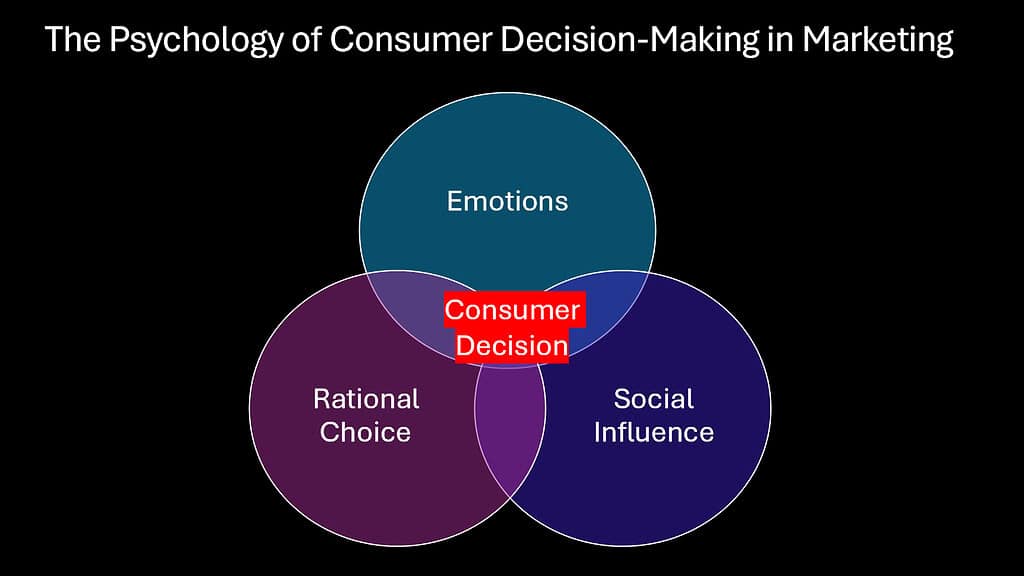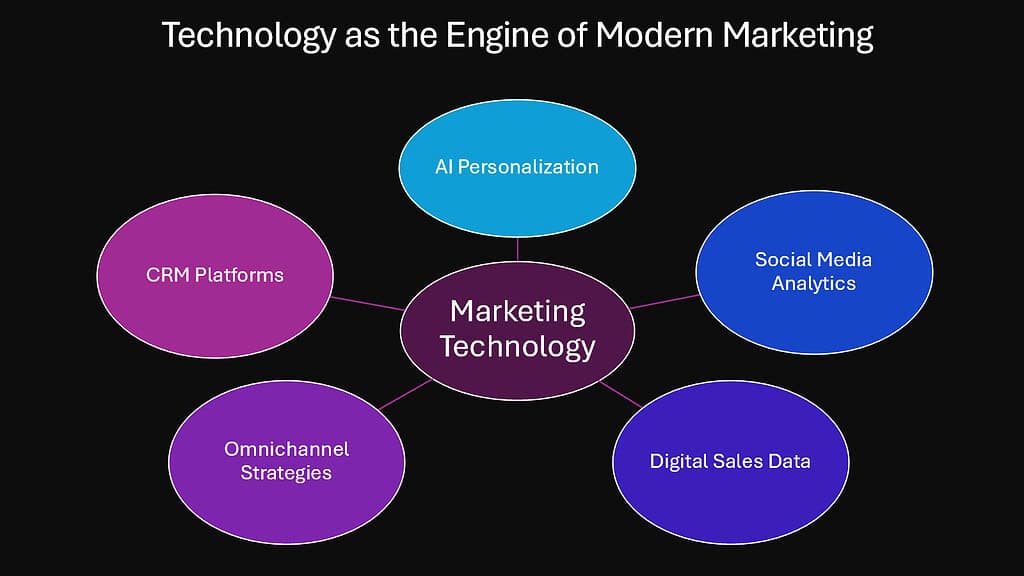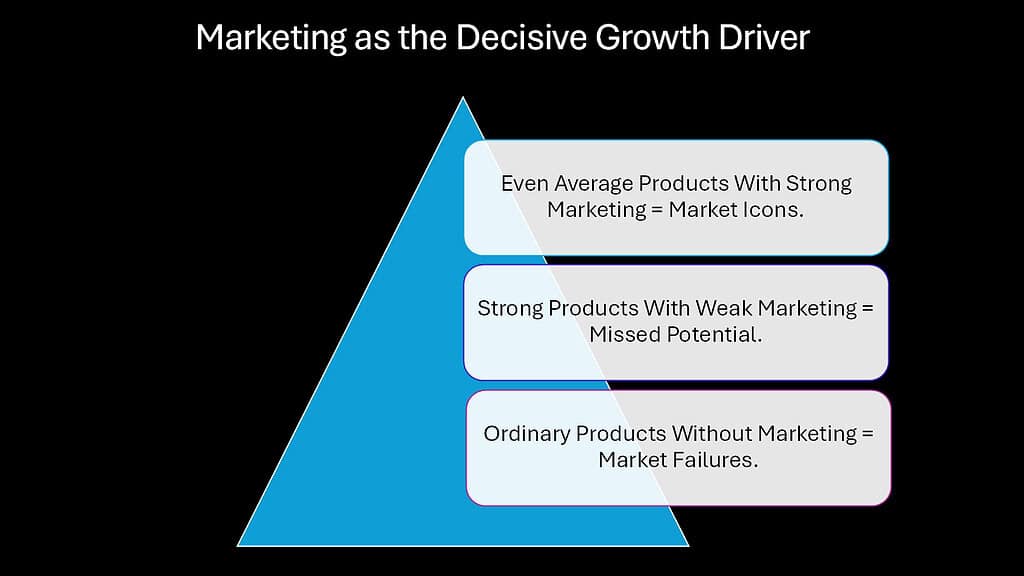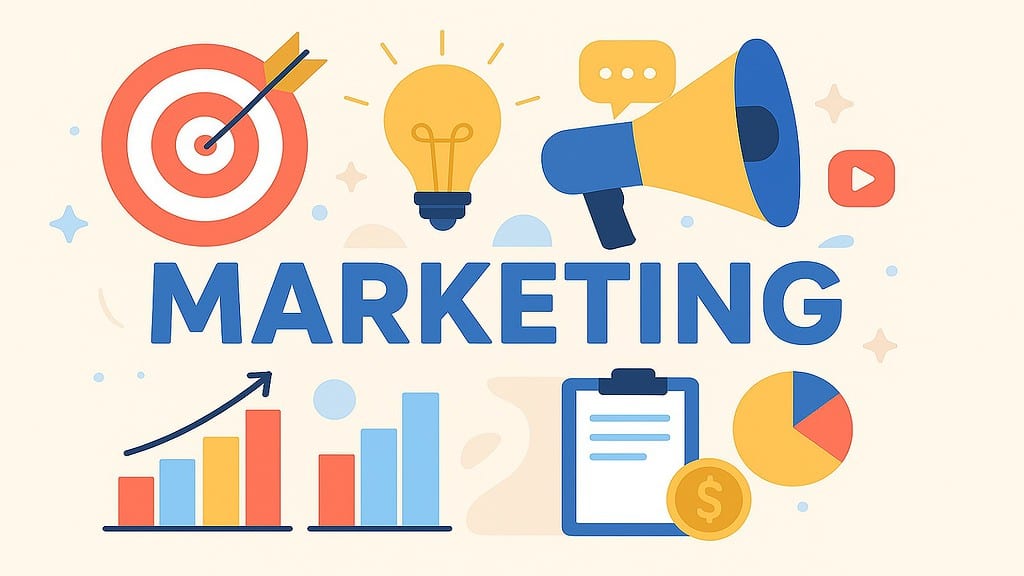Table of Contents
Introduction: Why Marketing is the Cornerstone of Business Success

The modern business landscape resembles a vast ocean where countless vessels compete for favorable winds and clear passages. In this turbulent environment, marketing serves as both compass and sail, guiding organizations toward profitable shores while harnessing the forces that propel sustainable growth. Marketing is one of the most important business functions, and companies that master this critical business function consistently outperform their competitors, not through chance, but through strategic positioning that transforms market challenges into competitive advantages.
Marketing transcends simple promotion or advertising. It represents the critical bridge connecting customer needs with business capabilities, creating value propositions that resonate deeply within target markets. Organizations that embrace marketing as a core business function experience enhanced customer acquisition, improved retention rates, and stronger brand equity. These benefits compound over time, establishing defensive moats around market positions while opening pathways for expansion.
Core Marketing Functions and Their Strategic Relationships:
| Marketing Function | Relationship to Marketing Strategy |
|---|---|
| Market Research & Consumer Insights | Foundation Function – Provides data-driven foundation for all marketing decisions |
| Brand Management | Strategic Umbrella – Ensures coherent brand experience and emotional connection |
| Product & Service Positioning | Strategic Foundation – Establishes competitive advantage and value proposition |
| Pricing Strategy | Revenue Driver – Balances profitability with market accessibility |
| Promotion & Advertising | Visibility Engine – Amplifies brand message and drives immediate market response |
| Content Marketing & Storytelling | Engagement Builder – Develops long-term relationships through value-driven communication |
| Digital Marketing & Performance Analytics | Performance Optimizer – Provides measurable results and continuous improvement capabilities |
| Sales Enablement & Lead Generation | Revenue Conversion – Bridges marketing efforts with actual sales results |
| Customer Relationship Management (CRM) | Relationship Sustainer – Maintains long-term customer value and retention |
| Distribution & Channel Strategy | Market Access – Ensures products reach target customers through appropriate channels |
The six proven strategies explored in this analysis demonstrate how marketing mastery drives measurable business success. From leveraging Porter’s Five Forces to implementing Kotler’s Holistic Concept, each approach offers distinct mechanisms for creating sustainable competitive advantages. This critical business function integrates consumer psychology with technological innovation, transforming traditional business models into dynamic growth engines.
Contemporary businesses face unprecedented complexity in reaching and engaging customers. Digital transformation has fundamentally altered how consumers research, evaluate, and purchase products. This evolution demands sophisticated marketing approaches that blend analytical rigor with creative execution. Organizations that develop these capabilities position themselves for long-term success in increasingly competitive markets.
Table 1: Marketing Compared to Other Business Functions
| Business Function | Primary Focus | Strategic Value |
|---|---|---|
| Marketing | Customer acquisition and retention | High strategic influence |
| Sales | Transaction completion | Tactical execution |
| Finance | Resource allocation and control | Risk management focus |
| Operations | Process efficiency and delivery | Operational excellence |
| Human Resources | Talent management and culture | Organizational capability |
| Customer Service | Post-purchase satisfaction | Retention support |
| Information Technology | Systems and infrastructure | Operational enablement |
| Legal and Compliance | Risk mitigation and governance | Risk reduction focus |
| Corporate Strategy | Long-term planning and direction | Strategic guidance |
| Procurement and Supply Chain | Cost management and delivery | Cost efficiency |
1. Marketing and Competitive Advantage: Using Porter’s Five Forces
Porter’s Five Forces framework reveals how marketing creates sustainable competitive advantages across multiple dimensions of market competition. Organizations that understand these dynamics can position themselves strategically. The threat of new entrants diminishes significantly when established companies build strong brand recognition and customer loyalty through consistent efforts. Consider how established technology companies maintain market dominance despite constant innovation from startups. Their marketing investments create customer switching costs and brand preferences that new competitors struggle to overcome. These barriers require substantial time and resources for challengers to breach.
Supplier power weakens when companies develop strong brand recognition that drives customer demand. Marketing creates pull-through demand that gives companies negotiating leverage with suppliers who want access to established customer bases. Retail giants demonstrate this principle by using their capabilities to build consumer demand, which suppliers must support regardless of their preferences. Buyer power faces constraints when this critical business function successfully differentiates products and builds emotional connections with customers. Premium brands command higher prices precisely because they create perceived value that transcends basic product functionality. This differentiation reduces price sensitivity and increases customer willingness to pay premium prices for perceived superior value.
The threat of substitutes decreases when companies build strong brand loyalty and create switching costs. Successful marketing programs establish habitual purchasing patterns and emotional attachments that make customers resistant to alternative solutions. Companies that invest consistently in their brand relationship find that their customers become advocates who resist competitive offerings.
Table 2: Marketing’s Impact on Porter’s Five Forces
| Force | Marketing Strategy | Competitive Advantage | Implementation Approach | Market Impact | Sustainability Factor |
|---|---|---|---|---|---|
| New Entrants | Brand building and loyalty programs | High switching costs for customers | Consistent messaging and experience | Reduced market penetration by newcomers | Long-term brand equity |
| Supplier Power | Demand creation and market presence | Increased negotiating leverage | Consumer pull-through strategies | Suppliers compete for access | Market leadership position |
| Buyer Power | Differentiation and value creation | Reduced price sensitivity | Premium positioning and benefits | Higher profit margins | Emotional brand connections |
| Substitutes | Category definition and loyalty | Product category leadership | Innovation communication | Market share protection | Continuous innovation narrative |
| Competitive Rivalry | Unique positioning and messaging | Distinct market position | Targeted segmentation strategies | Reduced direct competition | Sustainable differentiation |
2. Marketing and Consumer Behavior: Driving Choices That Define Growth

Understanding consumer psychology enables branding professionals to design campaigns that influence purchasing decisions at emotional and rational levels. Modern consumer behavior research reveals that decision-making processes involve complex interactions between conscious evaluation and subconscious emotional responses. Marketing that addresses both dimensions creates more effective customer engagement and drives sustainable business growth.
Consumer journey mapping has evolved beyond simple awareness-to-purchase funnels into a sophisticated understanding of how customers interact with brands across multiple touchpoints. Each interaction shapes perceptions and influences future purchasing decisions. Companies that map these journeys comprehensively can identify critical moments where marketing interventions create maximum impact on customer behavior.
Emotional triggers play fundamental roles in consumer decision-making processes. Research from behavioral economics demonstrates that emotional responses often override rational analysis, particularly for discretionary purchases. Branding and advertising campaigns that connect with customer emotions while providing rational justification for purchases achieve higher conversion rates and build stronger brand relationships.
Data-driven insights revolutionize how organizations understand and respond to consumer behavior patterns. Advanced analytics platforms enable real-time monitoring of customer interactions, preferences, and purchasing patterns. This information allows branding and advertising teams to personalize experiences and optimize campaign effectiveness based on actual behavior rather than assumptions.
Loyalty programs represent sophisticated applications of consumer behavior principles. These programs create psychological ownership and increase switching costs by rewarding continued engagement. The most successful loyalty programs combine transactional benefits with emotional recognition, creating multifaceted reasons for customers to maintain relationships with brands.
Table 3: Consumer Behavior Elements
| Behavior Element | Psychological Driver | Marketing Application | Customer Impact | Business Benefit | Measurement Approach |
|---|---|---|---|---|---|
| Emotional Decision Making | Subconscious preferences | Brand storytelling and imagery | Increased purchase intent | Higher conversion rates | Brand affinity surveys |
| Social Influence | Peer validation needs | User-generated content campaigns | Enhanced trust and credibility | Organic reach expansion | Social engagement metrics |
| Loss Aversion | Fear of missing opportunities | Limited-time offers and scarcity | Urgency in purchase decisions | Accelerated sales cycles | Conversion timing analysis |
| Cognitive Biases | Mental shortcuts in processing | Anchoring and framing strategies | Simplified decision making | Improved price acceptance | Price sensitivity studies |
| Habit Formation | Routine behavior patterns | Subscription and repeat purchase programs | Predictable revenue streams | Customer lifetime value increase | Retention rate tracking |
3. Marketing and Value Creation: Applying the 4Ps of the Marketing Mix
The foundational 4Ps framework continues to provide essential structure for marketing strategy development, despite decades of market evolution and technological advancement. Product, Price, Place, and Promotion work together to create comprehensive value propositions that address customer needs while achieving business objectives. Modern applications of this framework adapt traditional principles to digital environments and global markets. Product strategy within the branding extends beyond physical attributes to encompass the entire customer experience. Companies that excel at product branding understand that customers purchase solutions to problems rather than features or specifications. This perspective drives innovation toward customer-centric solutions that create meaningful differentiation in competitive markets.
Pricing strategy reflects complex interactions between cost structures, competitive dynamics, and customer value perceptions. Marketing’s role in pricing involves communicating value propositions that justify price points while managing customer expectations. Dynamic pricing models enabled by technology require sophisticated branding, advertising, and sales support to maintain customer relationships during price adjustments. Place strategy has transformed dramatically through digital channels and omnichannel customer expectations. Modern place decisions involve creating seamless customer experiences across multiple touchpoints while maintaining consistent brand presentation. Marketing coordinates these experiences to ensure customers receive consistent value regardless of the interaction channel.
Promotion encompasses the full spectrum of communication activities that connect brands with target audiences. Integrated promotional strategies combine traditional advertising with digital engagement, content advertising, and experiential campaigns. The most effective promotional approaches create ongoing dialogue between brands and customers rather than one-way communication.
Table 4: 4Ps Framework Applied to Modern Marketing Challenges
| 4P Elements | Traditional Approach | Modern Digital Adaptation | Global Market Considerations | Customer Experience Impact | Strategic Integration |
|---|---|---|---|---|---|
| Product | Feature-focused specifications | Experience-centered solutions | Cultural customization needs | End-to-end journey design | Innovation pipeline alignment |
| Price | Cost-plus pricing models | Dynamic and personalized pricing | Currency and market variations | Value perception management | Revenue optimization goals |
| Place | Physical distribution channels | Omnichannel ecosystem integration | Local market access requirements | Seamless experience delivery | Supply chain coordination |
| Promotion | Mass media advertising | Targeted digital engagement | Culturally relevant messaging | Personalized communication | Brand consistency maintenance |
4. Marketing and Technology: Harnessing Data, AI, and Digital Platforms

Technology integration has become essential for marketing effectiveness in contemporary business environments. Artificial intelligence enables personalized customer experiences at scale, while advanced analytics platforms provide insights that drive strategic decision-making. Companies that successfully combine branding and advertising expertise with technological capabilities create competitive advantages that extend across all business functions.
Artificial intelligence applications range from predictive analytics to automated content generation and customer service chatbots. These tools enable sales and advertising teams to process vast amounts of customer data and identify patterns that inform campaign optimization. AI-driven personalization creates unique experiences for individual customers while maintaining efficiency at enterprise scale.
Social media analytics provide real-time insights into customer sentiment, engagement patterns, and content performance. These platforms generate continuous streams of customer feedback that sales and branding teams can analyze to refine messaging and identify emerging trends. Social listening capabilities enable proactive reputation management and competitive intelligence gathering.
Omnichannel strategies require sophisticated technology integration to deliver consistent experiences across digital and physical touchpoints. Customer data platforms consolidate information from multiple sources to create unified customer profiles that inform personalized branding approaches. This integration enables seamless experiences that meet evolving customer expectations for convenience and relevance.
Marketing automation platforms streamline repetitive tasks while ensuring consistent communication, timing, and messaging. These systems enable complex campaign orchestration that responds to customer behaviors in real-time. Advanced automation includes lead scoring, content recommendations, and triggered communications that nurture customer relationships efficiently.
Table 5: Technology Applications
| Technology Category | Marketing Application | Customer Benefit | Business Impact | Implementation Complexity | ROI Potential |
|---|---|---|---|---|---|
| Artificial Intelligence | Predictive analytics and personalization | Relevant recommendations and experiences | Increased conversion and retention | High technical requirements | Substantial long-term returns |
| Social Media Analytics | Sentiment monitoring and trend identification | Responsive brand engagement | Improved brand perception | Moderate setup complexity | Immediate actionable insights |
| Marketing Automation | Campaign orchestration and lead nurturing | Timely and relevant communications | Increased efficiency and consistency | Moderate implementation effort | Strong operational efficiency gains |
| Customer Data Platforms | Unified customer profile management | Seamless omnichannel experiences | Enhanced customer understanding | High integration complexity | Significant competitive advantage |
| Content Management Systems | Personalized content delivery | Relevant information and experiences | Improved engagement metrics | Variable complexity levels | Measurable engagement improvements |
5. Marketing and Brand Loyalty: Applying Kotler’s Holistic Marketing Concept
Kotler’s Holistic Marketing Concept provides a comprehensive framework for building sustainable brand loyalty through integrated approaches that align internal capabilities with external market opportunities. This methodology recognizes that effective branding and promotion requires coordination across relationship, integrated, internal, and performance marketing dimensions.
Relationship marketing focuses on building long-term connections with customers, partners, and stakeholders rather than pursuing transactional interactions. Companies that excel at promotion and branding create ongoing value for participants in their business ecosystem. These relationships become competitive advantages that competitors cannot easily replicate through price competition or feature copying.
Internal marketing ensures that employees understand and support brand promises delivered to customers. Organizations with strong internal alignment create consistent customer experiences because employees at all levels understand their roles in delivering brand value. This internal alignment reduces customer experience variability and builds trust through consistent delivery.
Integrated marketing coordinates all communications activities to deliver consistent messages across customer touchpoints. This integration extends beyond advertising coordination to include product development, pricing strategies, and distribution decisions that support unified brand positioning. Customers experience coherent brand personalities that reinforce purchasing decisions.
Performance marketing emphasizes measurable outcomes and return on branding, advertising, and promotional investments. This approach ensures that various branding, advertising, and promotional activities contribute directly to business objectives while providing accountability for resource allocation decisions. Performance orientation drives continuous improvement and demonstrates marketing’s contribution to overall business success.
Table 6: Kotler’s Holistic Marketing Concept Applied to Brand Loyalty
| Marketing Dimension | Focus Area | Loyalty Building Mechanism | Stakeholder Impact | Measurement Approach | Long-term Benefit |
|---|---|---|---|---|---|
| Relationship | Customer and partner connections | Trust and mutual value creation | Enhanced satisfaction and advocacy | Customer lifetime value tracking | Sustainable competitive moats |
| Integrated | Message and experience consistency | Coherent brand personality | Reduced confusion and increased recognition | Brand awareness and perception studies | Strong brand equity development |
| Internal | Employee engagement and alignment | Consistent service delivery | Improved customer experience quality | Employee satisfaction and brand understanding | Cultural competitive advantage |
| Performance | Results measurement and optimization | Continuous improvement in value delivery | Demonstrated ROI and effectiveness | Marketing attribution and ROI analysis | Resource allocation optimization |
6. Marketing and Growth Strategy: Turning Insights into Sustainable Success
Marketing intelligence transforms customer insights into actionable growth strategies that drive sustainable business expansion. Organizations that excel at converting market research and customer feedback into strategic initiatives create systematic approaches to identifying and capitalizing on growth opportunities. This capability enables companies to anticipate market changes and position themselves advantageously for future success.
Partnership strategies create accelerated growth opportunities that individual organizations cannot achieve independently. Strategic alliances combine complementary capabilities and market access to create value propositions that exceed what partners could develop separately. Marketing plays a crucial role in identifying partnership opportunities and communicating the combined value to target markets.
New market entry strategies rely heavily on marketing intelligence to assess opportunity viability and develop appropriate positioning strategies. Successful market expansion requires a deep understanding of local customer preferences, competitive dynamics, and regulatory environments. Marketing research provides the foundation for entry decisions and ongoing market development approaches.
Scaling strategies enabled by data and analytics insights ensure growth initiatives maintain profitability while expanding market reach. Marketing analytics identify which customer segments, products, and channels deliver optimal returns on investment. This information guides resource allocation decisions that maximize growth efficiency and minimize expansion risks.
Customer acquisition and retention strategies informed by data analytics and intelligence create sustainable growth engines that compound over time. Companies that understand customer lifetime value economics can invest appropriately in acquisition while maintaining profitable relationships. This balance enables sustained growth that builds market position progressively.
Table 7: Marketing-Driven Growth Strategies
| Growth Strategy | Marketing Intelligence Application | Success Factors | Risk Mitigation | Scalability Considerations | Performance Indicators |
|---|---|---|---|---|---|
| Strategic Partnerships | Partner compatibility assessment | Complementary capabilities alignment | Due diligence and pilot programs | Standardized partnership processes | Revenue attribution and partner satisfaction |
| Market Expansion | Local market research and positioning | Cultural adaptation and local partnerships | Phased entry and market testing | Replicable market entry frameworks | Market penetration and share growth |
| Product Innovation | Customer needs identification | Customer-centric development processes | Prototype testing and feedback loops | Scalable innovation methodologies | Product adoption and revenue contribution |
| Digital Transformation | Customer journey optimization | Technology integration and training | Change management and pilot implementations | Platform scalability and integration | Digital engagement and conversion metrics |
| Customer Experience Enhancement | Experience gap analysis | Cross-functional collaboration | Continuous feedback and improvement | Systematic experience management | Customer satisfaction and loyalty metrics |
Conclusion: How Marketing Defines Winners and Losers in Business

Marketing mastery separates thriving organizations from those that struggle to maintain market relevance in increasingly competitive environments. The six proven strategies examined throughout this analysis demonstrate that marketing excellence requires systematic application of frameworks, consumer insights, and technological capabilities that create sustainable competitive advantages.
Organizations that treat marketing as a strategic business function rather than a tactical expense consistently outperform competitors across multiple performance dimensions. These companies are able to create the conditions for profitable growth by establishing strong customer relationships, building brand equity, and identifying market opportunities before competitors recognize them.
The evolution of marketing from promotion-focused activities to comprehensive business strategy reflects the increasing importance of customer-centricity in modern business success. Companies that embrace this evolution position themselves to thrive in markets where customer expectations continue rising and competitive pressures intensify across all industries.
Technology integration amplifies marketing effectiveness but does not replace the fundamental need for understanding customer psychology and competitive dynamics. The most successful organizations combine technological capabilities with strategic thinking that addresses customer needs while creating sustainable business value.
Future marketing success depends on developing integrated approaches that balance analytical rigor with creative execution. Organizations that master this balance create marketing capabilities that drive business growth while building defensive positions against competitive threats. Investment in marketing mastery represents investment in business survival and sustainable competitive advantage.
Table 8: Marketing Impact on Business Success Factors
| Success Factor | Marketing Contribution | Competitive Advantage | Long-term Sustainability | Investment Priority | Strategic Value |
|---|---|---|---|---|---|
| Customer Acquisition | Targeted positioning and messaging | Efficient customer attraction | Scalable acquisition systems | High priority investment | Foundation for growth |
| Brand Differentiation | Unique value proposition development | Reduced competitive pressure | Sustainable market position | Essential strategic investment | Defensive competitive moat |
| Market Intelligence | Consumer insight and trend identification | Proactive market positioning | Adaptive competitive capability | Critical capability investment | Strategic decision foundation |
| Innovation Direction | Customer needs identification | Customer-centric innovation | Relevant product development | Innovation-enabling investment | Future relevance assurance |
| Partnership Development | Market opportunity identification | Accelerated growth capabilities | Expanded market access | Strategic growth investment | Capability multiplication |
The companies that emerge as winners in tomorrow’s markets are those investing in marketing mastery today. Without marketing excellence, even superior products fail to achieve their potential. With marketing mastery, ordinary products can become market leaders that define industry standards and customer expectations.




